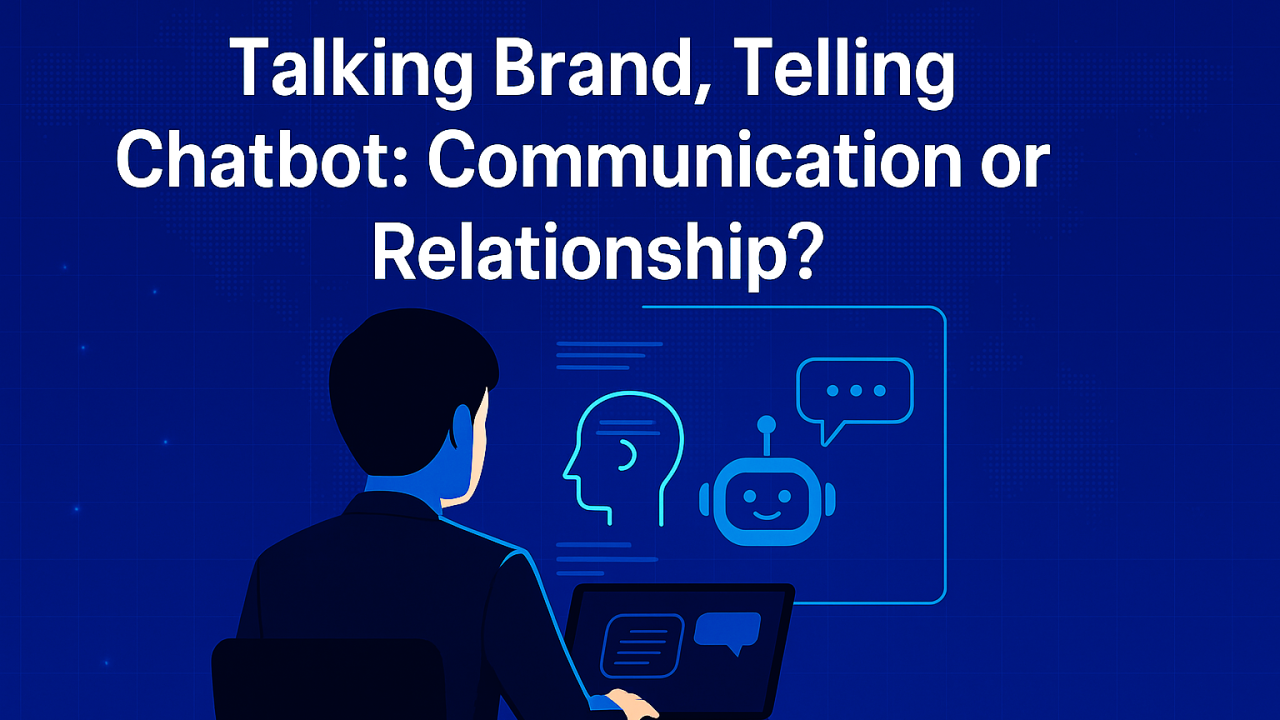During the recent holiday, I genuinely tried to disconnect. I checked my phone less, made an effort to visit relatives, and reconnected with long-unseen friends. These small breaks reminded me once again of the irreplaceable value of human connection—even in a digital age.
But precisely because of that, a question has been on my mind for this week’s article: Is it possible to replicate that sense of connection digitally? Especially for brands… Let me ask it more directly:
Can a brand truly build a relationship with its audience through a chatbot?
Communication or Relationship?
Many brands now use AI-powered chatbot systems to provide 24/7 service to their customers. Automated responses, predefined flows, and language model–driven solutions make communication consistently available. But is that enough?
While communication has become easier, building relationships still requires effort. Communication transmits information; relationship builds trust. So, while chatbots can transmit data, can they actually foster a bond? That’s the central question.
Chatbots Don’t Just Respond—They Shape Experience
In recent years, particularly in sectors such as tourism, e-commerce, banking, healthcare, public services, and education, chatbots have evolved beyond basic information delivery to become part of the experience design:
- In tourism, chatbots are used to answer guest inquiries before and after reservations, offer relevant suggestions, and provide multilingual support—improving satisfaction, especially among international travelers.
- In e-commerce, bots make product recommendations based on behavior, accelerate transactions, track orders, and even suggest personalized campaigns.
- In banking and finance, chatbots now provide more than balance inquiries; they offer investment suggestions, spending analysis, and risk alerts.
- In healthcare, digital assistants help with appointment scheduling, patient education, and tailored messaging based on medical history.
- In public services, chatbots serve as 24/7 guides—sharing information, managing applications, and streamlining interactions with municipal systems.
The moment when a chatbot delivers timely, personalized, and on-brand messaging aligned with a user’s need is the closest point to relationship-building.
Can AI Build Relationships?
It can—under the following conditions:
- It must convey not just data, but emotion: Tone of voice, conversational style, and empathy levels matter. The same answer delivered in different tones leads to vastly different reactions.
- It must learn continuously: Systems that evolve with each interaction and adapt to user preferences foster deeper engagement.
- It must enable seamless continuity: If a journey that starts with a bot is smoothly handed over to a human agent when necessary, a genuine connection begins to form.
Why Does This Matter?
Because brands today behave more like people. They have voices, personalities, and values. That personality must also be reflected in how a chatbot interacts. Otherwise, AI becomes nothing more than a utility—never an extension of the brand.
Chatbots excel in speed and availability. But relationships are built on consistency, authenticity, and being present at the right moment.
Conclusion: Chatbots Don’t Diminish Relationships—They Strengthen Them When Used Right
AI, when implemented with strategic intent, can truly become the voice of a brand. In some industries, it might even serve as the first point of contact—where brand loyalty is born.
But such relationships are not coded—they are cultivated through culture, human insight, and language intelligence.
📌 Even if it’s a few days late due to the holiday week, I’ll leave you with this reflection: A chatbot that doesn’t just answer, but truly understands, might be the beginning of a new era in brand-customer relationships.


